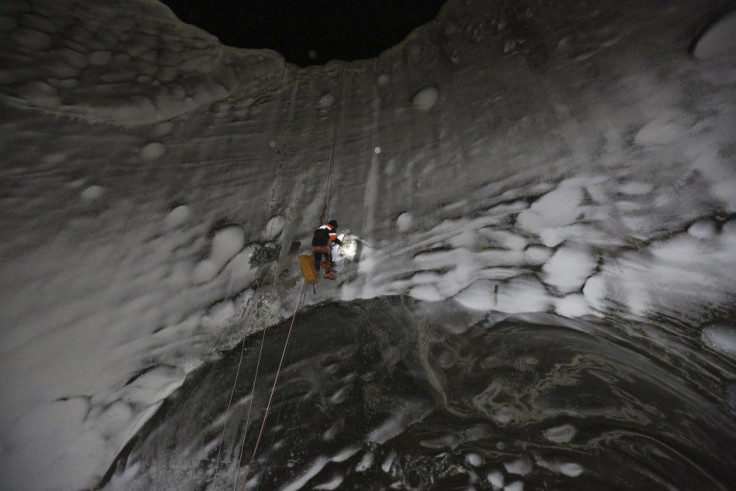Scientists Discover Mysterious Craters In Siberia; Call For Urgent Investigation

Scientists have discovered more mysterious craters in Siberia after they found a few in July 2014. A report by The Siberian Times noted that satellite images showed that at least four craters and that at least one of it was surrounded by about 20 mini craters.
According to Live Science, an 80 meter crater was discovered in the Yamal Peninsula in Russia in July 2014 after which two more were discovered in the Taimyr Peninsula and Tazovsky district, respectively. A scientist at the Oil and Gas Research Institute in Moscow, Vasily Bogoyavlensky, said that they knew of seven craters in the Arctic area. He said that five are on the Yamal Peninsula, one in the autonomous district of Yamal and one near the Taimyr Peninsula.
Satellite images showed that two of the craters had turned into lakes. One crater called B2 is located 10 kilometers south of Bovanenko. The crater has become a large lake and has 20 small craters around it. The small craters are filled with water.
Bogoyavlensky thought that there might be many more craters. He said that urgent investigation of the craters is necessary for the safety of the region. He added that the phenomenon had to be researched urgently for the prevention of possible disasters.
According to the Washington Post, if large amounts of methane gas was venting from the Arctic region into the atmosphere, it could cause a positive climate change feedback, which would mean more warming and more methane release. The reason behind it is that methane is a potent greenhouse gas and caused more global warming than what carbon dioxide did.
One of the ideas that was suggested about the origin of the mysterious craters is that it might represent the explosions of the methane gas into the atmosphere. A senior scientist at the Alfred Wegener Institute in Germany, Paul Overduin, said that what he thought was happening was that the permafrost had been acting as a seal on the ground, through which the methane gas could not permeate. He said that it reached a particular temperature where there was not enough ice in it which caused the gas to rush out.
To report problems or to leave feedback about this article, e-mail: afza.kandrikar@gmail.com.






